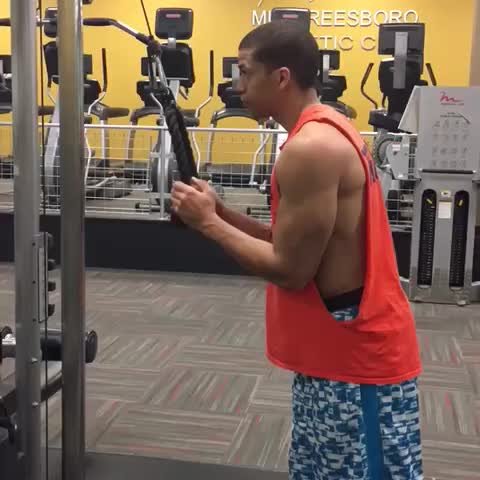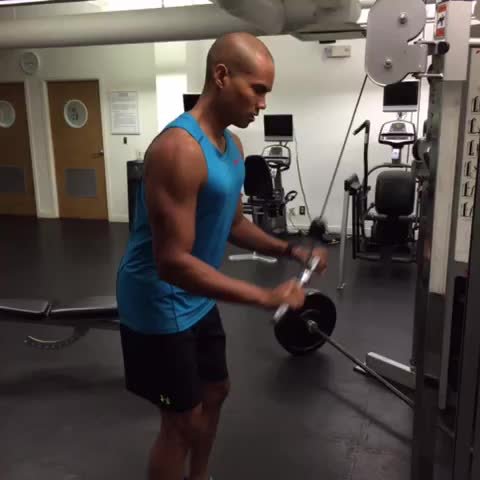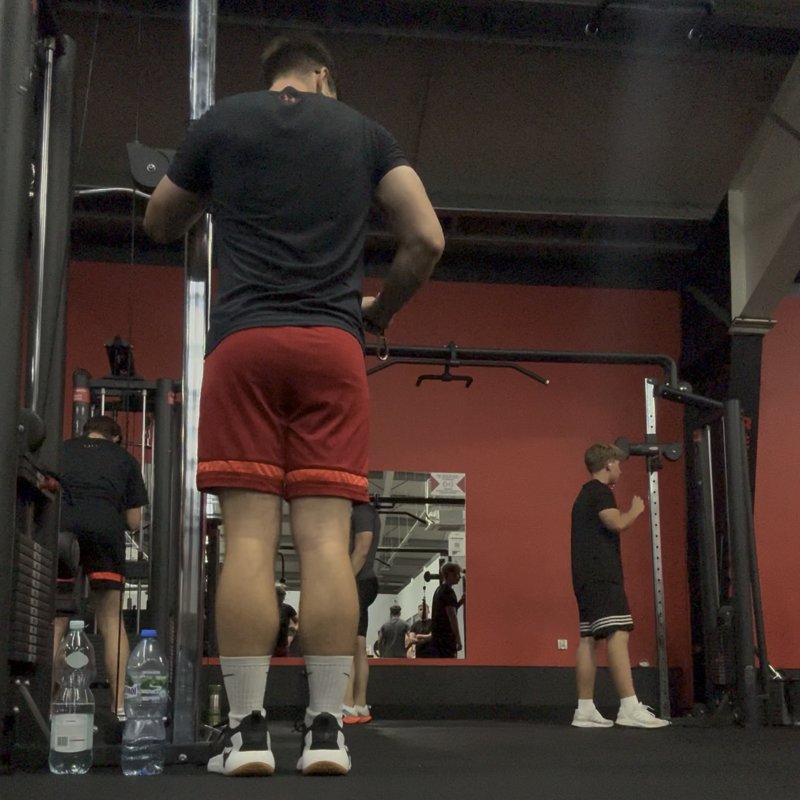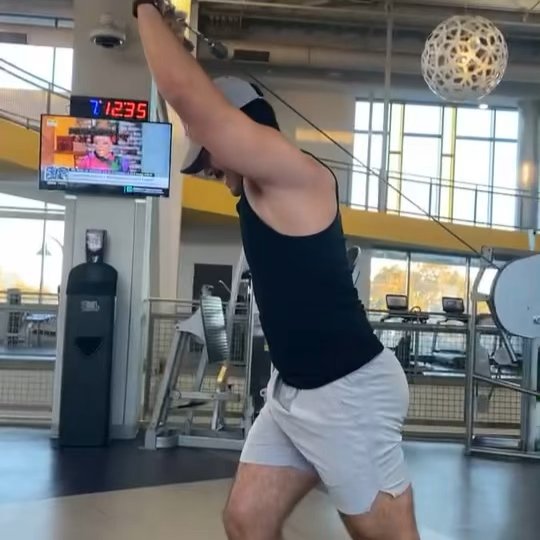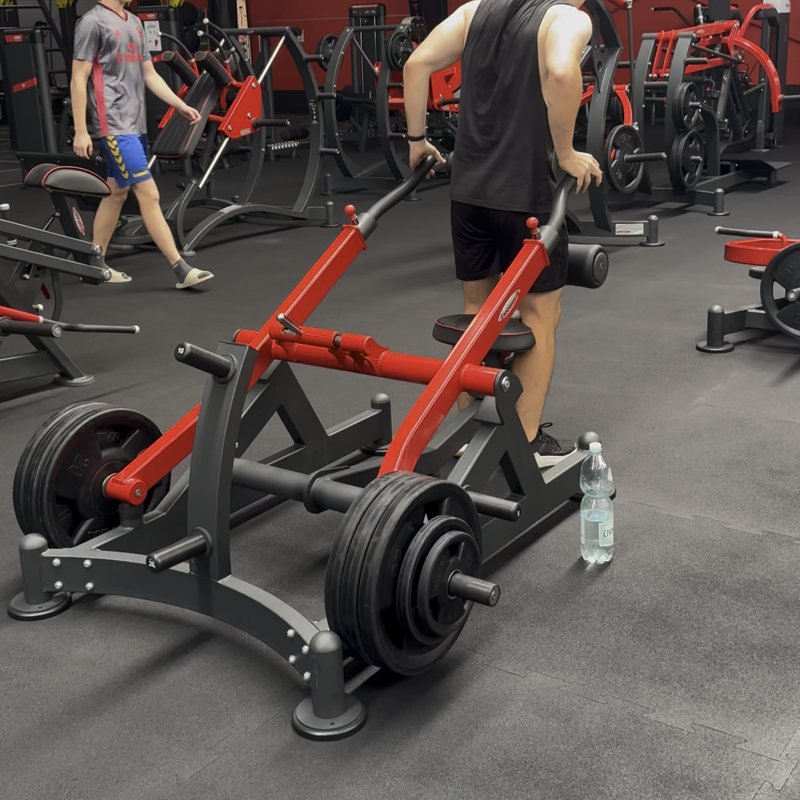Overhead Dumbbell Tricep Extension: The Ultimate Guide
The Overhead Dumbbell Tricep Extension is an isolation exercise that effectively targets all three heads of the triceps muscle, with particular emphasis on the long head, to build arm strength, size, and definition.
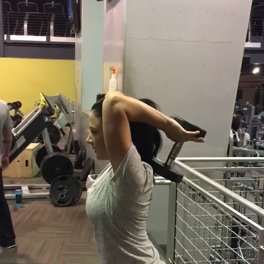
Quick Facts
Key Benefit
Long head tricep development and overall arm definition
Primary Muscles
Triceps
Secondary Muscles
Abdominals, Posterior Deltoids
Equipment
dumbbells, flat bench (optional), incline bench (optional)
Difficulty
Beginner
Type
Strength
In This Guide
Ready to master the Overhead Dumbbell Tricep Extension?
Track your progress, see improvements over time, and build strength consistently.
Download GravitusThe Overhead Dumbbell Tricep Extension is a fundamental isolation exercise that should be a staple in any comprehensive arm training program. This movement specifically targets the triceps brachii, which makes up approximately two-thirds of the upper arm's muscle mass. The triceps consists of three distinct heads—the lateral (outer), medial (inner), and long head. What makes the overhead extension particularly valuable is its emphasis on the long head, which is only fully stretched when the arm is positioned overhead with the shoulder in flexion. Unlike many pushing exercises that engage the triceps alongside other muscle groups, the overhead extension isolates the triceps almost entirely, making it an excellent choice for those looking to specifically enhance arm development. The dumbbell version offers additional benefits of improved stabilization, natural movement patterns, and the ability to train each arm independently to address potential imbalances. Whether your goal is to increase pushing strength, add arm size, or improve muscular definition, the Overhead Dumbbell Tricep Extension delivers targeted stimulation to a muscle group that significantly impacts both performance and aesthetics.
Benefits of Overhead Dumbbell Tricep Extensions
The Overhead Dumbbell Tricep Extension offers several distinct advantages for triceps development and overall arm training.
Long Head Emphasis
The overhead position uniquely stretches and targets the long head of the triceps, which is the largest of the three heads and contributes significantly to arm size.
Unilateral Training Option
Can be performed with one arm at a time to address muscle imbalances and improve mind-muscle connection on each side.
Joint-Friendly Alternative
The dumbbell version allows for natural wrist and elbow positioning, potentially reducing discomfort compared to barbell variations.
Minimal Equipment
Requires only a single dumbbell, making it accessible for home workouts or busy commercial gyms.
Core Engagement
The standing or seated position requires trunk stabilization, engaging core muscles as secondary stabilizers during the exercise.
Proper Form & Technique
Starting Position
- Select an appropriate dumbbell that allows for proper form throughout the exercise.
- Sit on a bench with back support or stand with feet shoulder-width apart and knees slightly bent.
- Grasp the dumbbell with both hands under one of the weight plates (two-handed version).
- Extend your arms overhead with the dumbbell positioned directly above your head or slightly behind it.
- Your palms should be facing upward, supporting the weight with both hands.
- Keep your upper arms close to your head with elbows pointing forward, not flared out to the sides.
- Maintain a neutral spine with chest up and shoulders down away from your ears.
Movement
- Begin by inhaling and slowly lowering the dumbbell behind your head by flexing at the elbows.
- Keep your upper arms stationary, allowing movement only at the elbow joints.
- Lower the weight until you feel a full stretch in your triceps (typically when elbows reach approximately 90 degrees).
- Pause briefly at the bottom position to emphasize the stretch.
- Exhale while contracting your triceps to extend your elbows and return the dumbbell to the starting position.
- Focus on a complete contraction at the top position without fully locking out the elbows.
- Repeat for the desired number of repetitions while maintaining control throughout the movement.
Key Form Tips
Upper Arm Position
Keep your upper arms stationary and close to your head throughout the entire movement.
Elbow Alignment
Point your elbows forward rather than allowing them to flare outward for optimal triceps activation.
Range of Motion
Lower the weight to a point where you feel a good stretch without straining your shoulders or elbows.
Control
Avoid using momentum—move slowly and deliberately, especially during the lowering phase.
Wrist Position
Keep your wrists straight and firm throughout the exercise to avoid unnecessary strain.
Muscles Worked
Primary Muscles
- triceps: All three heads of the triceps muscle are engaged, with the long head receiving maximum stimulation due to the overhead position and full stretch at the shoulder joint. The lateral (outer) head contributes to arm width and the horseshoe appearance, while the medial (inner) head assists in full elbow extension, particularly in the final phase of the movement.
Secondary Muscles
- Anconeus: A small muscle near the elbow that assists with elbow extension and stabilization during the movement.
- posterior deltoids: The rear shoulder muscle works isometrically to help maintain the overhead arm position.
- abdominals: The abdominals, obliques, and lower back muscles engage to stabilize the torso throughout the exercise, particularly in the standing variation.
Common Mistakes and How to Fix Them
Moving the Upper Arms
Allowing the upper arms to move forward or drop during the exercise reduces triceps isolation. Keep your upper arms vertical and stationary alongside your head throughout the movement, focusing only on elbow flexion and extension.
Using Momentum
Swinging the weight or using body momentum makes the exercise less effective and increases injury risk. Use a controlled tempo with a lighter weight if necessary, focusing on the triceps doing the work rather than momentum carrying the weight.
Flaring the Elbows
Letting the elbows point outward reduces long head engagement and can stress the shoulders. Keep your elbows pointing forward throughout the exercise, maintaining a narrow position for optimal triceps activation.
Incomplete Range of Motion
Not lowering the weight far enough or not fully extending at the top limits muscle development. Lower the dumbbell until you feel a full stretch in your triceps (typically to 90° elbow flexion or slightly beyond), then extend completely without locking out your elbows.
Excessive Weight
Using too heavy a dumbbell often leads to form breakdown and reduced effectiveness. Select a weight that allows you to maintain perfect form for all repetitions, focusing on feeling the triceps working rather than just moving the weight.
Exercise Variations
Grip Variations
-

Single-Arm Overhead Dumbbell Extension
Performing the exercise with one arm at a time for increased focus on each triceps and addressing potential imbalances.
-

Palms-In Grip Overhead Extension
Holding a single dumbbell vertically with both hands and palms facing inward for a more comfortable wrist position.
-

Alternating Overhead Extensions
Using two dumbbells and alternating arms, extending one while lowering the other for continuous tension.
Position Variations
-

Seated Overhead Dumbbell Extension
Performing the exercise while seated on a bench with back support for increased stability and focus on the triceps.
-
Standing Overhead Dumbbell Extension
Executing the movement from a standing position to engage more core stabilizers and improve functional strength.
-

Kneeling Overhead Extension
Performing the exercise in a kneeling position on a bench or mat to minimize lower back involvement and enhance core stabilization.
Advanced Techniques
-

Eccentric-Focused Overhead Extension
Using a slower tempo (3-5 seconds) during the lowering phase to increase time under tension and muscle damage for growth.
-

Overhead Extension with Pause
Adding a 2-3 second pause at the bottom position to eliminate momentum and maximize the stretch on the long head.
-

Drop Set Overhead Extensions
Performing a set to near failure, then immediately reducing the weight and continuing for additional repetitions without rest.
Frequently Asked Questions
Both approaches are effective but serve slightly different purposes. Using one dumbbell with two hands (the traditional version) provides greater stability and often allows you to use more total weight, which can be beneficial for overall triceps development. This version also tends to be easier to control for beginners. Using two separate dumbbells (one in each hand) increases the stabilization demand and can help identify and address strength imbalances between arms. If you're new to the exercise, start with the two-handed version to master the movement pattern. As you progress, you might incorporate both variations for complete development—the two-handed version for maximum loading and the separate dumbbell approach for balance and coordination improvements.
Most people see optimal results training triceps 2-3 times per week with at least 48 hours between sessions focusing on the same muscle group. The overhead dumbbell tricep extension can be included in upper body push days, arm-specific workouts, or full-body sessions. For a balanced approach, consider including overhead extensions in one weekly session and different triceps exercises (like pushdowns or close-grip pressing movements) in other sessions to target the muscle from multiple angles. If you're prioritizing triceps development, you might perform this exercise first in your triceps sequence when your energy is highest. For maintenance or as part of a broader program, it can be positioned after compound movements like bench press or dips. Remember that training volume should align with your recovery capacity and overall program design.
This exercise places the shoulder in a position of flexion, which can be problematic for those with certain shoulder conditions like impingement, rotator cuff injuries, or AC joint issues. If you have a history of shoulder problems, consider these modifications: (1) Try the single-arm version which allows more natural positioning, (2) Don't extend your arm completely overhead—keep a slight angle that's comfortable for your shoulder, (3) Use a lighter weight and focus on perfect form, (4) Consider alternative triceps exercises like pushdowns or neutral-grip pressing movements that don't require overhead positioning. Always prioritize pain-free movement—if the exercise causes shoulder discomfort even with modifications, it's best to choose alternative triceps exercises. Consulting with a physical therapist can provide personalized guidance for your specific condition.
The Overhead Dumbbell Tricep Extension can effectively contribute to both size and strength development, depending on how you program it. For hypertrophy (size), perform the exercise in the 8-15 repetition range with moderate weights, focusing on time under tension, controlled tempos, and complete muscle activation. This approach creates metabolic stress and mechanical tension that drives muscle growth. For strength, incorporate heavier weights in the 6-8 repetition range, focusing on progressive overload while maintaining proper form. However, for maximal strength development, this isolation exercise should complement compound movements like close-grip bench press or weighted dips, which allow for greater loading of the triceps. Most balanced programs include both approaches—perhaps using the overhead extension primarily for hypertrophy while relying on compound movements for maximal strength development.
Video Demonstrations
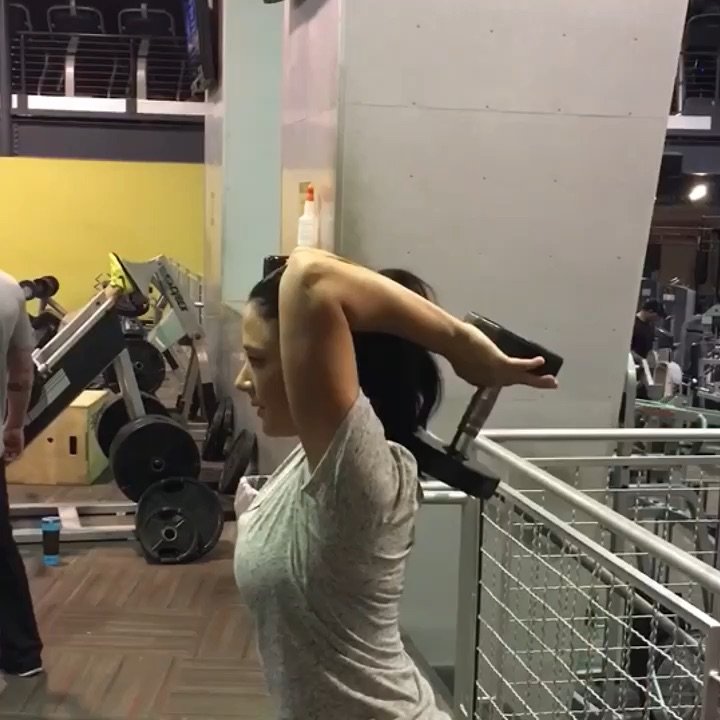
Log in to watch video demonstrations
Login to Watch3 video demonstrations available
Find more video demonstrations in the Gravitus app
Tips from the Community
-

Position hands at the top end of the dumbbell, making a diamond shape around the base.
-

Keep elbows at a 45 degree angle when lowering the dumbbell behind your head, and make sure to lean your head forward throughout the movement.
Track your progress with Gravitus
Download Gravitus to log your workouts, track your progress, and join a community of fitness enthusiasts.

Helpful Resources
One Rep Max Calculator
Find your one rep max for any exercise without maximal testing. Essential for developing effective strength training programs.
Calculate 1RMWorkout Programs
Follow structured workout programs created by fitness professionals to maximize your strength and muscle gains.
View Programs